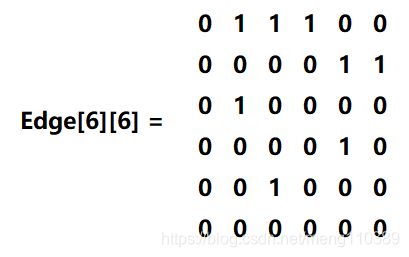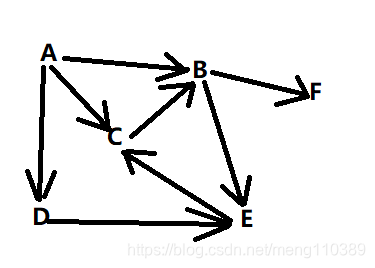图的表示法--邻接矩阵
基本思想
- 用一维数组存储顶点
- 用二维数组存储边
设图A = (V, E) 是一个有n个顶点的图,图的邻接矩阵为Edge[n][n],图的邻接矩阵为 Edge[n][n],则:
Edge[i][j] = w,w>0,i和j连接
0,i==j或i和j不连接
注:w为权值,当不需要权值时,取w为1表示结点间连接。
邻接矩阵法简介
邻接矩阵法的头结点
- 记录顶点个数
- 记录与顶点相关的数据描述
- 记录描述边集的二维数组
typedef struct _tag_MGraph
{
int count;
MVertex** v;
int** matrix;
} TMGraph;
代码实现
LinkQueue.h
#pragma once
typedef void LinkQueue;
LinkQueue* LinkQueue_Create();
void LinkQueue_Destroy(LinkQueue* queue);
void LinkQueue_Clear(LinkQueue* queue);
int LinkQueue_Append(LinkQueue* queue, void* item);
void* LinkQueue_Retrieve(LinkQueue* queue);
void* LinkQueue_Header(LinkQueue* queue);
int LinkQueue_Length(LinkQueue* queue);
MGraph.c
#pragma once
typedef void MGraph;
typedef void MVertex;
typedef void (MGraph_Printf)(MVertex*);
MGraph* MGraph_Create(MVertex** v, int n);
void MGraph_Destroy(MGraph* graph);
void MGraph_Clear(MGraph* graph);
int MGraph_AddEdge(MGraph* graph, int v1, int v2, int w);
int MGraph_RemoveEdge(MGraph* graph, int v1, int v2);
int MGraph_GetEdge(MGraph* graph, int v1, int v2);
/*顶点的度*/
int MGraph_TD(MGraph* graph, int v);
int MGraph_VertexCount(MGraph* graph);
int MGraph_EdgeCount(MGraph* graph);
/*深度优先遍历*/
void MGraph_DFS(MGraph* graph, int v, MGraph_Printf* pFunc);
/*广度优先遍历*/
void MGraph_BFS(MGraph* graph, int v, MGraph_Printf* pFunc);
void MGraph_Display(MGraph* graph, MGraph_Printf* pFunc);
LinkQueue.c
#include MGraph.c
#include "MGraph.h"
#include main.c
#define _CRT_SECURE_NO_WARNINGS
#include 运行结果:
0:A 1:B 2:C 3:D 4:E 5:F
A,B,E,C,F,D,
A,B,C,D,E,F,

